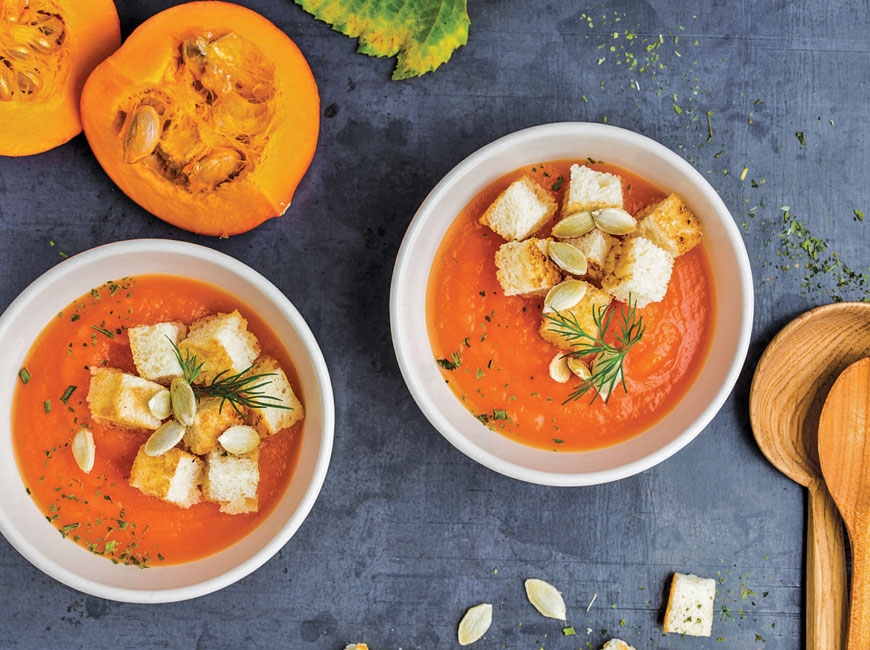- Nutriton: Winter squash are typically higher in beta carotene (vitamin A) and fiber than summer squash.
- Storage: Thanks to their hard skin, winter squash keep longer and do not need to be refrigerated.
- Tip: To store for a longer period of time keep in a cool place like your pantry rather than on your countertop.
- Preparation: Because their skins are hard, winter squash often harder to cut.
- Tip: To make cutting and portioning easier, piece the skin of the winter squash with a fork or knife and microwave for 4-5 minutes before attempting to cut. You can often also find pre-cut winter squash in your Ingles Produce section and in some cases as a frozen item.
- Recipes: An easy way to cook many of the winter squash varieties is to remove seeds, drizzle with canola or olive oil and seasoning and then roast in a hot over (425 degrees) until fork tender ( you can easily pierce with a fork). Winter squash can also be stuffed or added to soups or stews.
Check out recipes for winter squash on the Ingles website (ingles-markets.com) or by picking up a copy of the Ingles Table magazine in our deli department
Leah McGrath, RDN, LDN
Ingles Markets Corporate Dietitian
facebook.com/LeahMcgrathDietitian
800-334-4936
